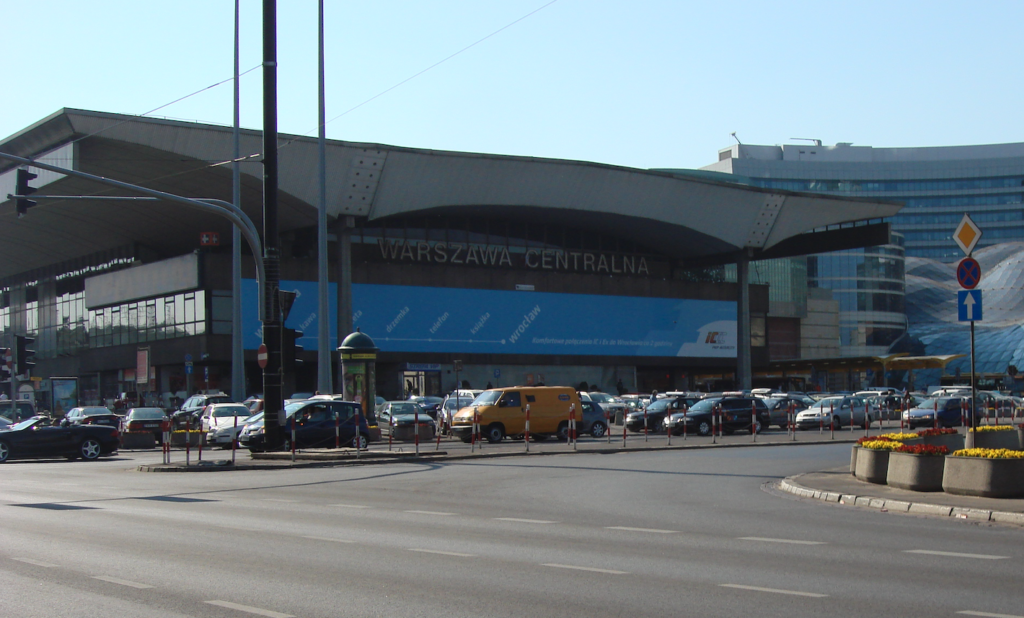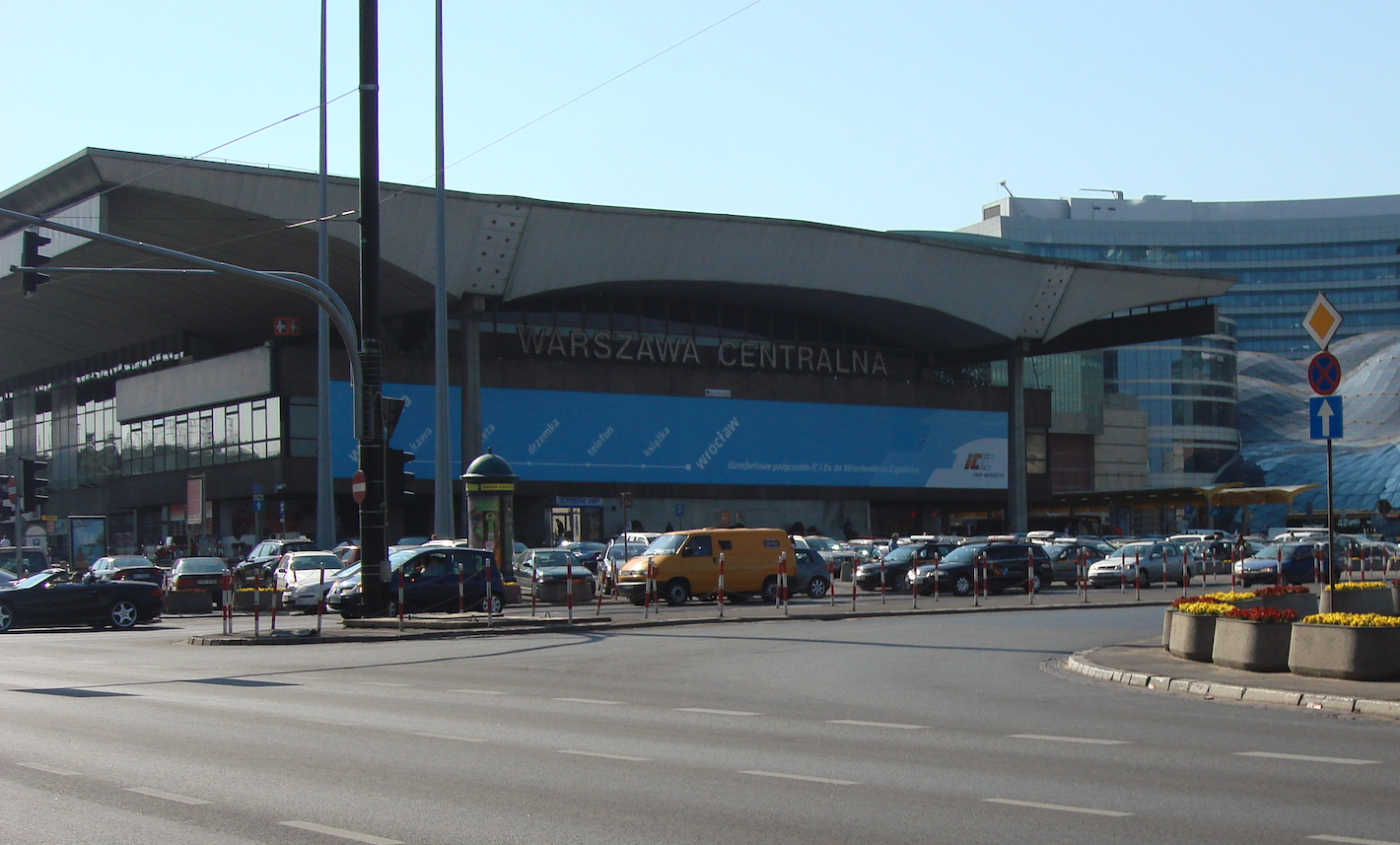Warszawa 2025-02-27
Warsaw Central.

Warsaw Central Station is located in the city center, at Aleje Jerozolimskie, between Aleja Jana Pawła II and Emilii Plater Street, in the cross-city tunnel connecting the Warsaw East and Warsaw West stations.
Warsaw Central Station is the main railway station in the capital of Poland, one of the most important transport hubs in Poland. Its construction and history are closely related to the post-war reconstruction of Warsaw and the development of rail transport in Poland.
The idea of building a modern station in the center of Warsaw appeared in the 1930s. At that time, plans were made to create a representative station. Construction of a monumental and modern Main Station was started. However, its completion was interrupted by the Germanic and Muscovite brothers, who jointly attacked Poland on September 1, 1939.
After World War II, the Main Station temporarily served as the central station. However, it was a temporary station, small and constantly crowded. It did not meet the requirements of passenger service at a decent level. Currently, it is the Warszawa Główna station, and the former station halls house a museum; the Museum Station.
In 1949, a competition for a new station was announced, but the project was not implemented due to lack of funds. Only in the 1960s, the idea of building a new station was returned. In 1972, under the pressure of the upcoming visit of Leonid Brezhnev (a kind of Moscow communist tsar), the authorities of the Polish People’s Republic decided to urgently build a station that was to be a showcase of socialist Poland.
On May 28, 1967, the future Dworzec Centralny station began to serve as a passenger stop. In 1967, there were two platforms and wooden ticket pavilions, the temporary Warszawa Śródmieście stop was transformed into the Warszawa Centralna stop.
The design of the Warszawa Centralna station was created by a team of architects led by Arseniusz Romanowicz, and construction was carried out at a record pace; from 1972 to 1975. The official opening of Warszawa Centralna took place on 5 December 1975. The station was a modern facility, distinguished by its elegant shape, spacious main hall and extensive technical infrastructure, including escalators and automatic entrance doors.
The station’s characteristic feature was and is the underground platforms, which are easily accessible from the station hall. When the station was opened, a modern railway information system was installed. The granite floor was polished. The station was and is perfectly connected to the city, not only due to its location in the city centre, but also with public transport; city buses, trams, metro, TAXI.
Although the Warsaw Central Station was the pride of the Polish People’s Republic, already in the 90s technical problems began to appear resulting from the rush during construction. The basis for this were limited renovations and the lack of introducing new solutions to keep up with the changing requirements of passengers.
In the period 2010-2011, in connection with the organisation of the UEFA Euro 2012 European Football Championship, the building was modernised. The station gained a modern lighting system, the platforms were renovated and the toilets were renovated. In addition, in 2015-2016, a mezzanine was built connecting the waiting room in the west wing with the catering section in the east wing. Currently, the modernization of the cross-city line is planned, which will include the platform part of the Central Station. However, this work is not scheduled to begin until after 2030.
Currently (2025), the Warsaw Central Station serves over 350 domestic and international connections per day. In the underground part, there are 4 platforms, 400 m long and 8 platform edges. Platforms 1 and 2 serve eastbound traffic, and platforms 3 and 4 serve westbound traffic. The platforms serve both domestic and international trains, including Pendolino, InterCity, TLK and international trains. The station is a through station and no train starts or ends here. The final stations for the given connections are the Warszawa Wschodnia and Warszawa Zachodnia stations. In 2017, the station served 15.1 million passengers. In 2021, the station served 12.3 million passengers, which was related to the Chinese virus pandemic. The building has ticket offices and ticket machines. According to the railway lines, the Central Station is located on LK No. 2 Warszawa Zachodnia – Terespol.
The station has become an icon of Polish modernist architecture and one of the most characteristic points of the capital.
Written by Karol Placha Hetman
